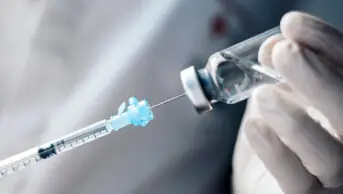Medication errors that lead to adverse drug events are a major problem, and one that has been acknowledged by the World Health Organization’s third Global Patient Safety Challenge. In the UK, 1 in every 550 prescriptions in primary care contains potentially life-threatening errors, 1 in 25 hospital admissions is caused by prescribing errors in primary care, and adverse drug reactions — most of which are avoidable — cost the NHS approximately £500m per year.
Electronic audit and feedback dashboards provide feedback away from the point of care to allow clinicians to review, and potentially change, their practice. Dashboards are widely used despite there being little evidence on what contributes to their success or failure. Identifying problems without suggesting remedial actions is a common limitation of electronic audit and feedback dashboards; and it has also been reported that clinicians may not have the time or skills to perform remedial actions when they are recommended by such systems.
The University of Nottingham, with the University of Manchester and the University of Edinburgh, developed the pharmacist-led information technology intervention for reducing medication errors (PINCER) in primary care. This not only generates electronic lists of patients who are exposed to potentially hazardous prescribing, but also features outreach visits by trained clinical pharmacists, who work with staff in general practice to resolve hazardous prescribing incidents and prevent their recurrence. The PINCER intervention was shown to be more effective at reducing numbers of at-risk patients than computer-generated feedback alone.
PINCER relies on snapshots of data extracted from GP patient records and provides feedback to clinicians only once. Feedback is known to be more effective when given more than once, which may explain why the reduction in rates of potentially hazardous prescribing induced by PINCER loses significance at the 12-month follow-up. Therefore, we have built on the PINCER model to create an interactive electronic dashboard that creates a continuous feedback loop for cycles of quality improvement.
Our Salford Medication Safety Dashboard (SMASH) — which queries GP system data, based on predefined prescribing safety indicators — identifies patients whose medications put them at risk of adverse events, such as acute kidney injury or gastrointestinal bleeding. These patient lists are securely presented to GPs and pharmacists in a timely, user-friendly and actionable manner. Information on the dashboard is updated each night.
In line with the findings of PINCER — which demonstrated the crucial role of the clinical pharmacist in reducing medication errors — we recruited and trained pharmacists working in general practices across Salford to help deliver the PINCER intervention using our new dashboard. Pharmacists arranged meetings with the general practices to explain to staff the importance of the medication safety indicators and how to use the dashboard. Pharmacists were encouraged to spend an ‘intensive’ period of 12 weeks resolving cases of hazardous prescribing identified by SMASH. We monitored practices for 12 months following the initial meeting with the pharmacist, both quantitatively by logging interactions with the dashboard and monitoring the number of patients still at risk from potentially hazardous prescribing, and qualitatively by interviewing stakeholders involved in the introduction and use of the dashboard.
All but 1 (43 out of 44) of the general practices in Salford took part in the SMASH trial. The trial ran from April 2016, when the first practice was recruited, until September 2018, when the last practice finished its 12-month follow-up. The system had high usage levels and stakeholder interviews produced very positive feedback. Nearly 50 people have been trained to use SMASH, including pharmacists, pharmacy technicians, GPs and clinical commissioning group (CCG) managers.
An interrupted time series analysis will be published shortly to demonstrate the effect on prescribing safety and adverse events. However, in January 2017, an interim analysis compared recruited practices with at least one month’s usage with unrecruited practices or those with less than one month’s usage; there was a statistically and clinically significant reduction in the number of at-risk patients. Early indications suggest that the reduction has also been sustained at the 12-month follow-up.
The involvement of Salford CCG and Salford Royal NHS Foundation Trust was essential to SMASH’s success. We collaborated closely during the dashboard’s development and implementation, and these partners provided time for pharmacists and helped recruit pharmacists and general practices for the trial.
Feedback from the trial is being used to add new features to the next version of SMASH to improve its usability and efficacy. There are also plans to add more indicators of potentially hazardous prescribing. As the intervention has been so successful, we are planning to roll the dashboard out more widely in primary care in England.
It is also important to consider patients’ contribution to their safe care, and with industry partners we will explore how to involve patients in reducing medication-related health risks. This is likely to change the patient–provider relationship and will provide interesting directions for future research.
Richard Williams, Richard Keers, Wouter T Gude, Mark Jeffries, Colin Davies, Benjamin Brown, Evangelos Kontopantelis, Anthony J Avery, Darren M Ashcroft, Niels Peek; National Institute for Health Research Greater Manchester Patient Safety Translational Research Centre, University of Manchester
This research was funded by the National Institute for Health Research (NIHR) Greater Manchester Patient Safety Translational Research Centre. The views expressed are those of the authors and not necessarily those of the NHS, the NIHR or the Department of Health and Social Care.


